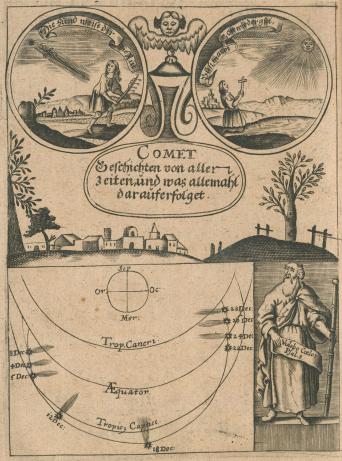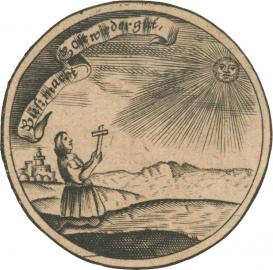This project aims at the historical reconstruction of the cometary discourse through the analysis of German vernacular pamphlets on comets from the sixteenth and seventeenth centuries. The project’s method is represented by a comparative and interdisciplinary approach in order to tackle the following questions: Why did comets acquire such great relevance in early-modern concepts of the relation between nature, man, and God, as reflected in many pamphlets? And, why did the cultural influence of these works end quite abruptly at the end of the seventeenth century? From the mid seventeenth century onward, the integrated image of comets as causes (natura phenomena) and as signs (of divine phenomena) was dissolved through the emergence of distinguished debates concerning different and specific aspects related to the natural phenomena of the appearance of a comet.

Christian Theophilus, Cometen, Propheten, 1665, p. 6. MPIWG Library.
The determination of the causes and of the meaning of comets came to fall within the exclusive but complementary domains of natural philosophy and theology, respectively. In this epistemological shift, astrology progressively lost its function as a support to both dimensions and therefore was gradually marginalized. Comets were finally seen as heavenly bodies revolving around the sun and as such were dealt with in the framework of a physicalized astronomy, while their semiotic dimension still lived on in the framework of an increasing marginalized physico-theology and a teleological understanding of their cosmological role (Anna Jerratsch, Der frühneuzeitliche Kometendiskurs im Spiegel deutschsprachiger Flugschriften, Dissertation, Fakultät 1, Humboldt Universität zu Berlin).

